14 Incredible Destinations To Follow In The Footsteps Of Dinosaurs
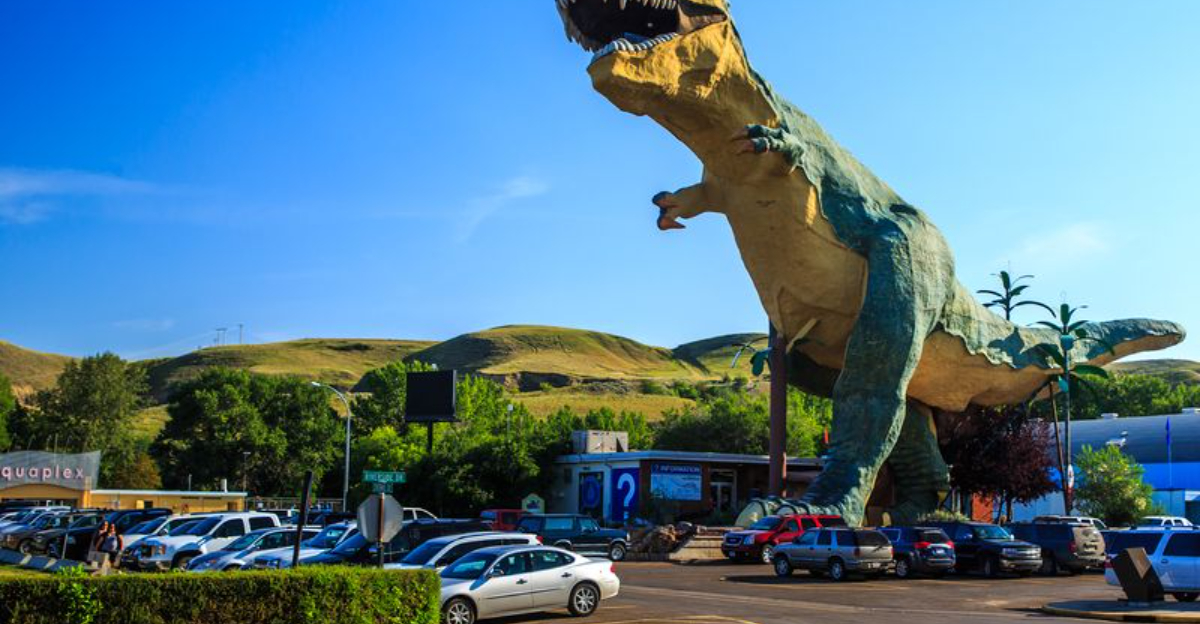
Imagine standing where a T. rex once roamed or placing your foot beside a fossilized dinosaur track—it’s the kind of moment that sends chills down your spine (in the best way).
For dino-lovers, science buffs, and curious travelers alike, the world offers some jaw-dropping destinations that bring the prehistoric past vividly to life. I’ve visited sites where ancient bones peek from rocky cliffs and museums where towering skeletons loom overhead.
Some spots even let you dig for fossils yourself! Whether you’re traveling with kids or indulging your inner child, these places will ignite your sense of wonder. Ready to follow in the footsteps of giants?
1. Dinosaur Provincial Park, Alberta, Canada
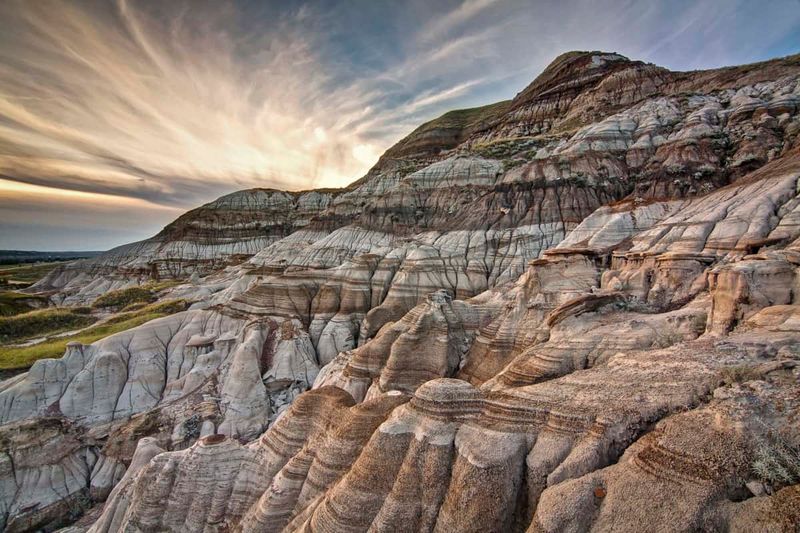
Walking through the badlands of Alberta feels like stepping into a prehistoric time machine. This UNESCO World Heritage Site contains some of the richest dinosaur fossil beds on Earth, with remains from over 40 dinosaur species discovered here.
The stark, otherworldly landscape of hoodoos and coulees was once a lush coastal plain where countless dinosaurs lived and died during the Late Cretaceous period. Many complete dinosaur skeletons in museums worldwide originated from this remarkable place.
Visitors can join guided excavation tours during summer months where you might spot fossils emerging from eroding hillsides – just as they’ve been doing for over 130 years since paleontologists first explored this fossil wonderland.
2. Jurassic Coast, United Kingdom
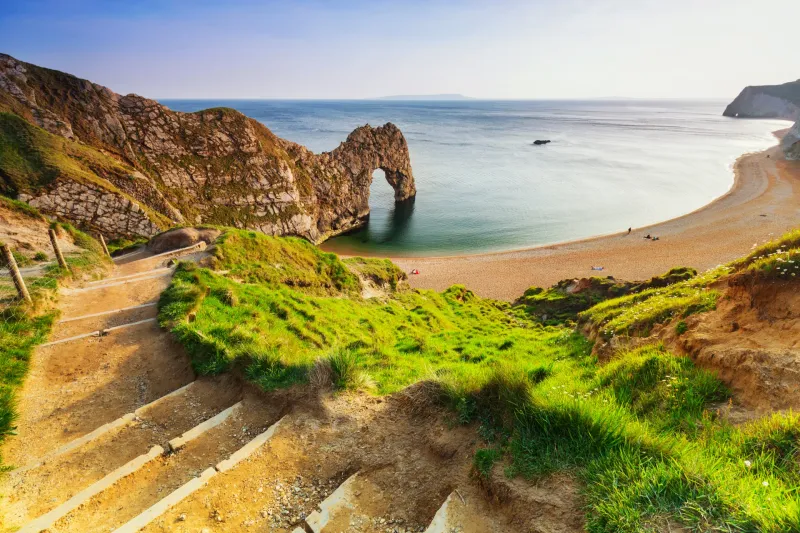
Stretching 95 miles along southern England, this dramatic coastline tells a remarkable 185-million-year story of Earth’s history. Named for its abundant Jurassic fossils, the rugged cliffs actually span three geological periods: Triassic, Jurassic, and Cretaceous.
Amateur fossil hunters regularly make exciting discoveries along the beaches after storms erode the cliffs. Mary Anning, one of history’s most important fossil hunters, made her groundbreaking ichthyosaur discoveries here in the early 1800s.
The colorful layered cliffs at places like Lyme Regis contain so many perfectly preserved specimens that scientists have reconstructed entire ancient ecosystems. It’s like reading Earth’s diary, with each rock layer revealing a different chapter in dinosaur evolution.
3. Dinosaur National Monument, USA
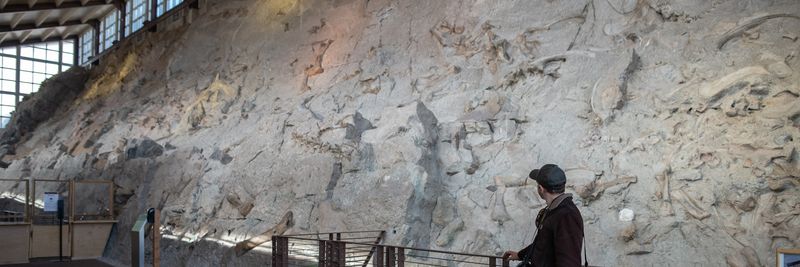
Imagine standing before a wall containing over 1,500 dinosaur bones – still embedded in the rock exactly as they were discovered. The famous Quarry Exhibit Hall here protects what might be the most spectacular dinosaur fossil display on Earth.
Straddling the Utah-Colorado border, this rugged wilderness preserves an ancient riverbed where countless dinosaur remains washed together around 149 million years ago. The resulting bone bed includes specimens of Allosaurus, Diplodocus, Stegosaurus and other iconic Jurassic species.
Beyond the quarry, visitors can hike through stunning canyons where dinosaur tracks and petroglyphs tell stories of both prehistoric creatures and the indigenous peoples who discovered these fossils thousands of years before modern paleontologists arrived.
4. Gobi Desert, Mongolia

Few dinosaur hunting grounds have yielded more groundbreaking discoveries than Mongolia’s Gobi Desert. This harsh landscape first gained fame in the 1920s when Roy Chapman Andrews (reportedly an inspiration for Indiana Jones) led expeditions that found the first dinosaur eggs ever identified.
The extraordinarily preserved fossils here include fighting dinosaurs – a Velociraptor and Protoceratops locked in combat for 80 million years. Many specimens show soft tissue impressions, providing rare glimpses of dinosaur skin texture and other features normally lost to time.
Modern paleontologists continue making astounding finds in this remote region, where windswept red sandstone formations have protected dinosaur remains from the Late Cretaceous period with remarkable clarity. The Flaming Cliffs site remains particularly famous for its fossil treasures.
5. Dinosaur Valley State Park, Texas, USA
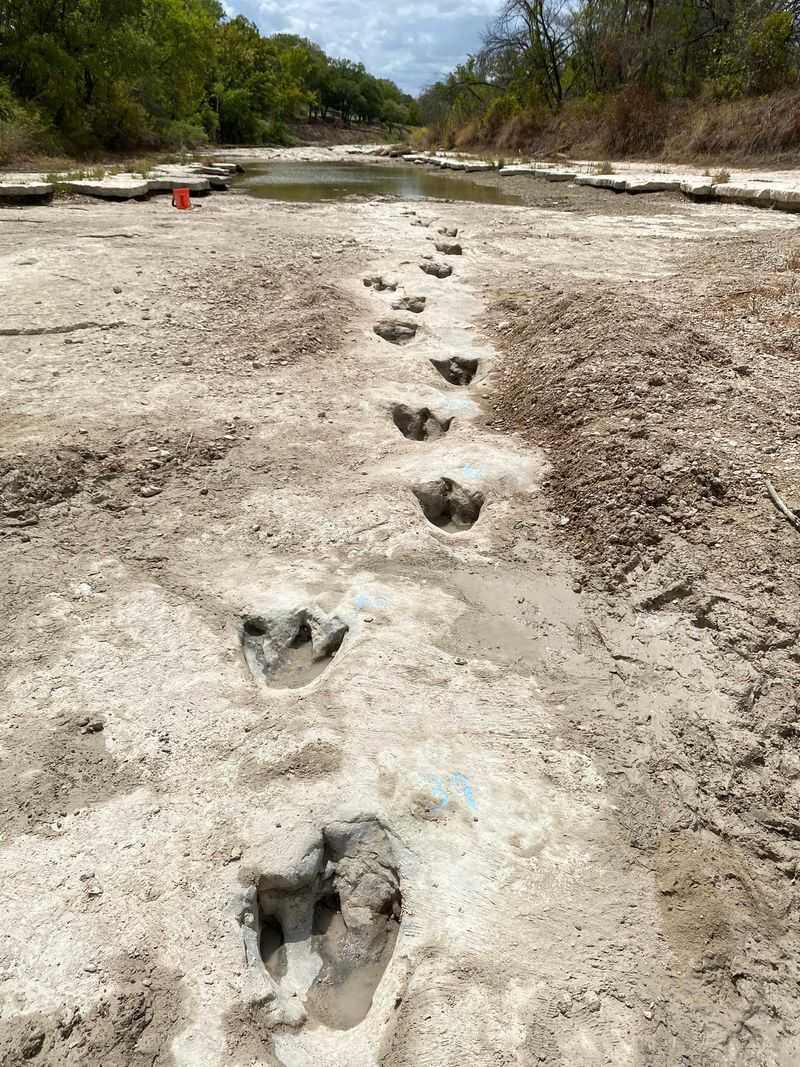
Splashing through the shallow Paluxy River reveals an extraordinary treasure – massive three-toed footprints pressed into limestone by dinosaurs 113 million years ago. These remarkably preserved tracks include both carnivorous theropod prints and those of massive sauropods, creating prehistoric highways along what was once a shoreline.
Did you know this site gained fame in the 1930s when locals claimed to find “man tracks” alongside dinosaur prints? Though debunked (they were actually elongated dinosaur tracks), this controversy helped spark public interest in the site.
Visitors today can literally walk in dinosaur footsteps during dry periods when the riverbed is exposed. The park’s limestone bottom creates perfect conditions for preserving these traces, offering a direct physical connection to creatures that walked this same ground in the Early Cretaceous.
6. Zigong Dinosaur Museum, Sichuan, China
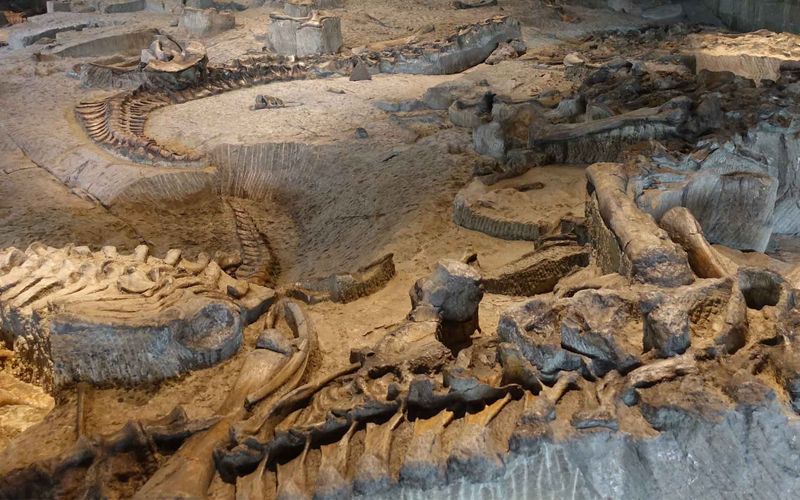
Built directly over one of the world’s richest dinosaur fossil sites, this unique museum lets you stand at the exact spot where dozens of complete dinosaur skeletons were discovered. The main hall preserves the original bone bed just as paleontologists found it – a jumble of massive skeletons that died together in a prehistoric disaster.
Sichuan Province harbors one of Earth’s most significant Middle Jurassic fossil deposits, a period from which few dinosaur remains have been found elsewhere. Many of the specimens belong to species found nowhere else, making this collection truly irreplaceable.
The museum’s location in Zigong – once called the “Salt City” – relates directly to the dinosaurs’ preservation, as mineral-rich waters helped fossilize these creatures approximately 160 million years ago. The surrounding region continues yielding new species that reshape our understanding of dinosaur evolution.
7. La Rioja Dinosaur Tracks, Spain
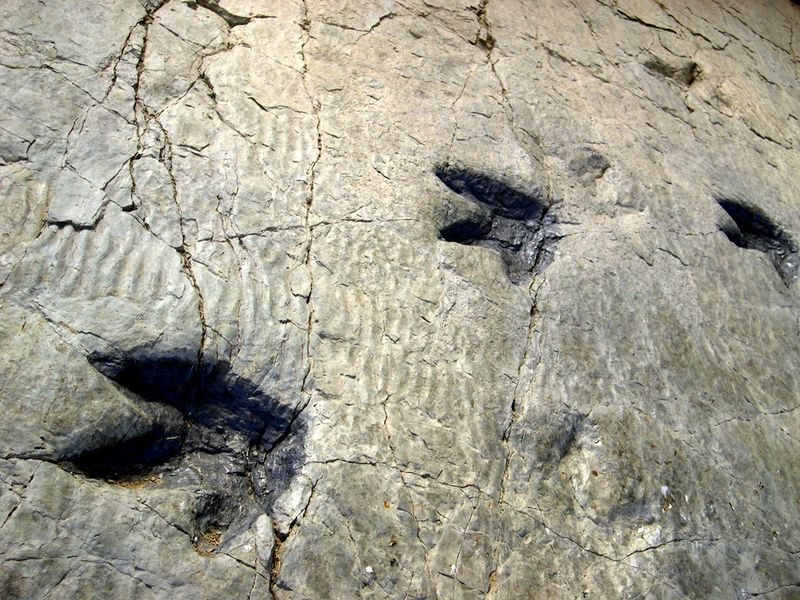
Across Spain’s sun-drenched La Rioja region lie over 120 sites containing more than 10,000 dinosaur footprints – one of the largest concentrations on Earth. The most spectacular site, Valdecevillo, features a near-vertical wall covered with hundreds of three-toed tracks zigzagging across its surface.
These footprints tell fascinating stories about dinosaur behavior. Some tracks show evidence of herding, with adults surrounding juveniles for protection. Others reveal hunting patterns or even running speeds calculated from stride lengths.
Most impressively, these Spanish trackways span almost the entire Mesozoic Era (the Age of Dinosaurs), from early Jurassic to late Cretaceous periods. This provides a unique timeline of dinosaur evolution across 135 million years – all preserved in the mud that turned to stone beneath their feet.
8. Hell Creek Formation, Montana, USA

If you’re curious about dinosaurs’ final days before extinction, Hell Creek offers an unparalleled window into that pivotal moment in Earth’s history. This fossil-rich formation preserves the last chapter of the dinosaur story, including specimens from just before the asteroid impact 66 million years ago.
The world’s most complete Tyrannosaurus rex skeleton, “Sue,” was discovered here in 1990. The region continues yielding spectacular specimens, including “Tristan,” a T. rex with preserved soft tissue that revolutionized our understanding of dinosaur biology.
What makes Hell Creek truly special is the presence of the K-Pg boundary – a thin layer of iridium-rich clay marking the exact moment of the mass extinction event. Few places on Earth let you literally touch the dividing line between the Age of Dinosaurs and our modern world.
9. Lufeng Dinosaur Valley, Yunnan, China

Hidden among the misty mountains of southwestern China lies a prehistoric treasure trove that has revolutionized our understanding of early dinosaur evolution. Lufeng preserves an extraordinary record of Early Jurassic dinosaurs from approximately 200-190 million years ago – a crucial period when dinosaurs were beginning their rise to dominance.
The star attractions include remarkably complete skeletons of Lufengosaurus, one of the first massive long-necked dinosaurs. Many specimens retain rare soft tissue impressions, including fossilized skin patterns and internal structures.
This remote valley gained international attention when scientists discovered 200-million-year-old collagen protein still preserved within fossils – the oldest organic material ever recovered from dinosaur remains. Such finds continue making Lufeng central to research on dinosaur biology and the preservation of ancient organic molecules.
10. Dinosaur Ridge, Colorado, USA
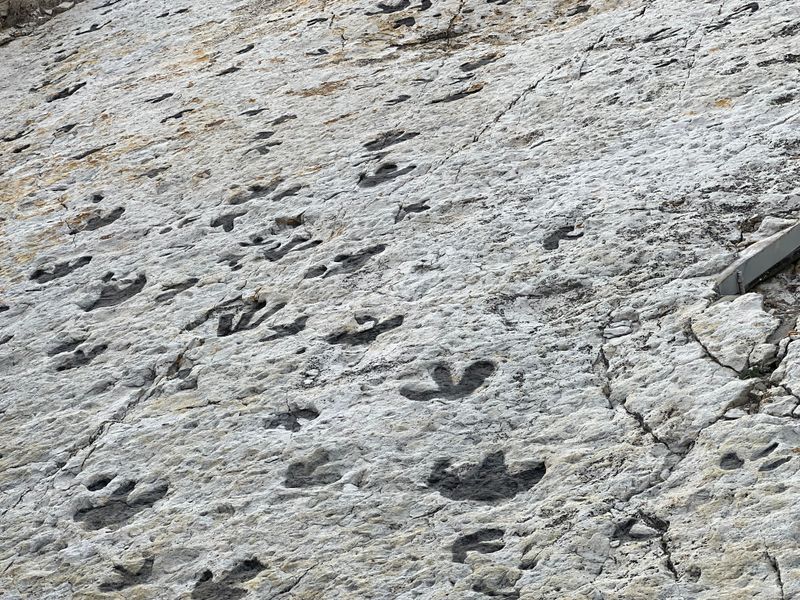
Just minutes from Denver stands a tilted sandstone ridge containing one of the first major dinosaur discoveries in North America. In 1877, Arthur Lakes uncovered massive bones here that would later be identified as Stegosaurus – the first specimen of this iconic dinosaur ever found.
The ridge’s main attraction today is a spectacular “dinosaur highway” – hundreds of footprints preserved along what was once a muddy shoreline. These tracks include those of long-necked sauropods so well-preserved you can see skin impressions and claw marks.
Geological forces dramatically tilted these ancient layers nearly vertical, allowing visitors to walk alongside footprints that would normally be horizontal. This unique presentation makes Dinosaur Ridge not just a paleontological site but also a perfect classroom for understanding Earth’s powerful geological processes that preserved these prehistoric treasures.
11. Ischigualasto Provincial Park, Argentina
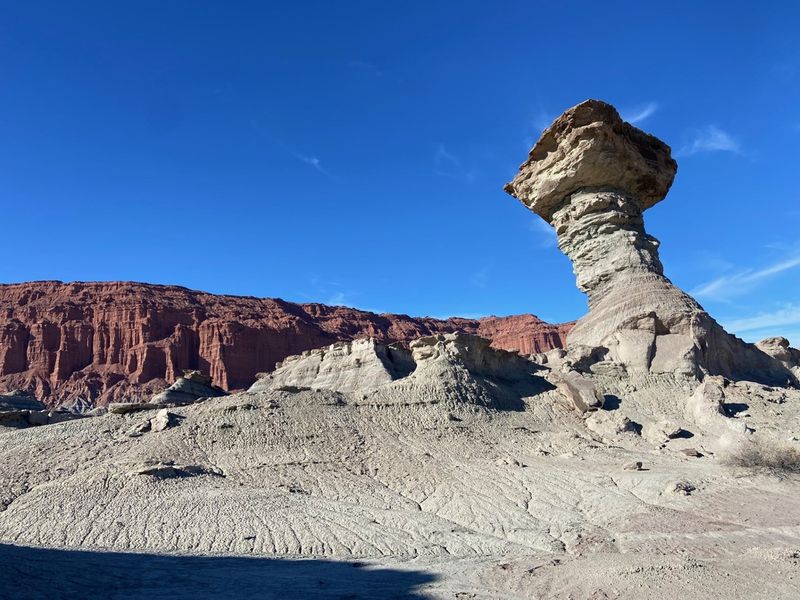
Known as “Valley of the Moon” for its otherworldly landscape, this remote Argentine desert preserves something truly extraordinary – the world’s oldest dinosaur ecosystem. The rock layers here date to the Triassic Period (about 230 million years ago) when dinosaurs were just beginning to appear.
Paleontologists discovered Eoraptor here, one of the earliest dinosaurs ever found, helping reveal how these creatures evolved from small bipedal ancestors. The remarkably complete fossil record includes not just dinosaurs but the entire ecosystem they inhabited, from plants to early mammals.
The park’s bizarre geological formations – sculpted by wind into mushroom shapes and balancing rocks – create a surreal backdrop for dinosaur exploration. This UNESCO World Heritage site represents a rare glimpse into the dawn of the dinosaur era, when these creatures were still small, fleet-footed animals just beginning their evolutionary journey.
12. Dinosaur Provincial Park, Alberta, Canada

Nestled in the Canadian Badlands lies a fossil treasure trove so rich that paleontologists have discovered over 500 dinosaur skeletons here since the 1880s. The eroding hillsides continuously reveal new specimens, making this one of the few places where dinosaur discoveries happen almost daily.
The park preserves a remarkable moment in time – the Late Cretaceous period around 75 million years ago when this area was a lush coastal plain teeming with life. Visitors can join guided excavations during summer months or explore interpretive trails where dinosaur bones literally stick out from the ground.
What makes this site truly special is the preservation of entire dinosaur communities, not just isolated specimens. From tiny mammals to massive horned dinosaurs like Centrosaurus, the fossil record here provides a complete picture of a vibrant ecosystem that existed just before the age of dinosaurs came to its dramatic end.
13. Crystal Palace Dinosaurs, London, UK
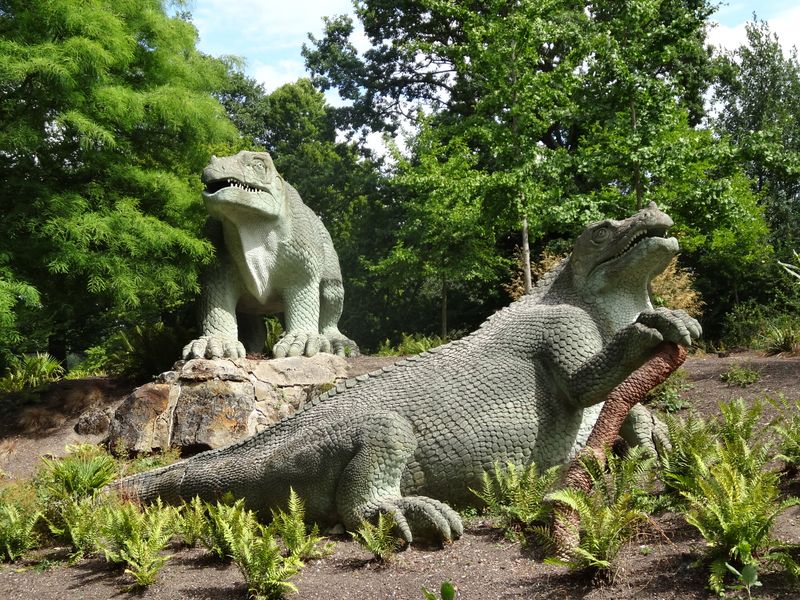
Hidden in a London park stands a collection of dinosaur sculptures that, while wildly inaccurate by modern standards, represent something remarkable – the world’s first dinosaur reconstructions ever created. Built in the 1850s, these life-sized concrete beasts show how Victorians imagined dinosaurs based on the limited fossil evidence available.
The sculptures include Iguanodon depicted as a rhino-like quadruped with its thumb spike placed on its nose like a horn – a far cry from how we now know these dinosaurs looked. Despite their scientific inaccuracies, these Grade I listed monuments represent a crucial moment in paleontological history.
Walking among these historical curiosities offers a fascinating glimpse into the evolution of scientific understanding. They stand as a reminder that science constantly refines itself as new evidence emerges – the dinosaurs we imagine today may look just as outdated to future generations.
14. Drumheller, Alberta, Canada
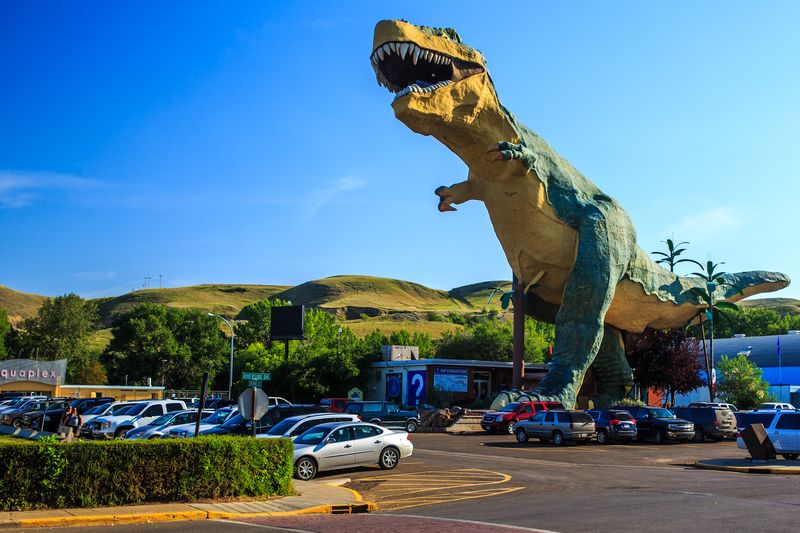
Nicknamed the “Dinosaur Capital of the World,” this small Canadian town sits at the heart of the fossil-rich Red Deer River Valley. The town embraces its prehistoric heritage with the world’s largest dinosaur statue – a 86-foot Tyrannosaurus rex that visitors can climb inside for spectacular views of the surrounding badlands.
The Royal Tyrrell Museum here houses one of Earth’s largest dinosaur collections, including “Black Beauty” – a rare Tyrannosaurus with black mineral-replaced bones. The museum’s preparation lab lets visitors watch paleontologists carefully extract real fossils from surrounding rock.
Beyond the museum, the landscape itself tells the dinosaur story. Horseshoe Canyon’s multi-colored layers represent different time periods, with each stratum potentially holding fossils from different dinosaur communities that lived and died as environments changed over millions of years in this once-tropical ancient ecosystem.
